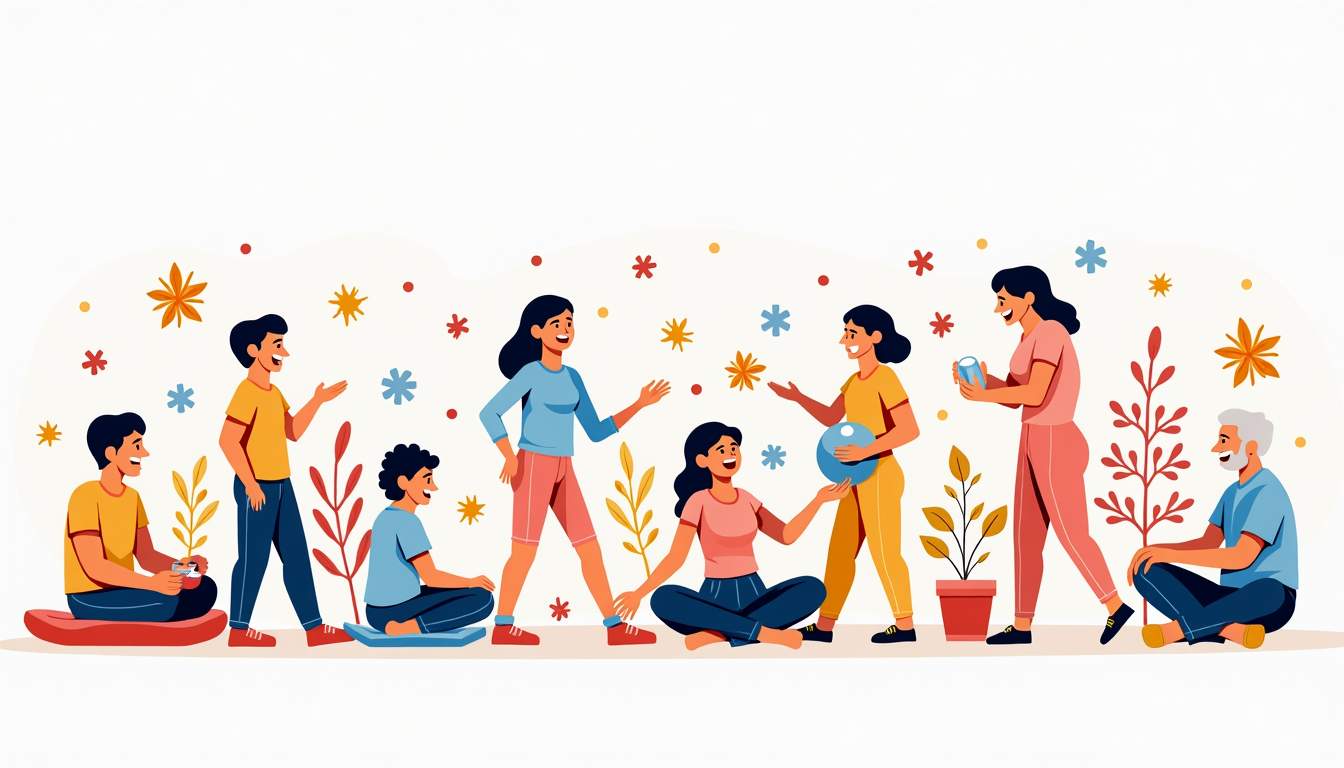
When a child scrapes a knee or an elderly parent complains of aching joints, the instinct is to find relief fast. Pain doesn’t discriminate by age, but the way it’s managed certainly should. Families face unique challenges when it comes to addressing discomfort across generations. What works for a toddler won’t always suit a grandparent, and vice versa. Understanding the nuances of pain relief for every family member can transform how everyone copes with those tough moments.
Understanding Pain Across Ages
Pain is a universal experience, but its causes and effects can vary widely depending on age. Children often experience pain from injuries, growth spurts, or illnesses, while adults might face pain related to lifestyle, stress, or chronic conditions. Seniors frequently deal with arthritis, neuropathy, or other age-related ailments. Recognizing these differences is the first step towards effective relief.

Kids, for example, might struggle to articulate their pain clearly. A toddler’s distress could look like irritability or refusal to use a limb, while teenagers might downplay their symptoms to avoid missing school or activities. Adults often juggle pain with busy schedules, sometimes ignoring it until it worsens. Older adults may accept pain as “just part of getting old,” which can lead to under-treatment.
How Pain Manifests Differently
In children, pain can be acute and sudden-like a fall or ear infection-or related to developmental phases such as teething. Adults might experience more musculoskeletal pain from repetitive strain or stress, while seniors often face chronic pain that affects mobility and quality of life. Emotional responses to pain also shift; younger children might cry or cling to caregivers, whereas adults and seniors may become withdrawn or depressed.
Moreover, the perception of pain can be influenced by psychological and social factors at different life stages. For instance, children may respond to pain based on their environment; a comforting presence can significantly reduce their distress. In contrast, adults often face the added burden of societal expectations, leading them to mask their pain in professional settings or social gatherings. This can create a cycle where untreated pain exacerbates stress and anxiety, further complicating their overall health. To explore professional solutions for pain management, you may visit Advanced Pain Relief Clinic MK through the following link: https://advancedpainreliefclinicmk.co.uk/
For seniors, the experience of pain can be intertwined with feelings of isolation or loss of independence. Chronic conditions like arthritis can not only limit physical activity but also lead to emotional challenges, such as depression or anxiety about declining health. Understanding the multifaceted nature of pain across these age groups is essential for caregivers and healthcare providers, enabling them to tailor interventions that address both the physical and emotional aspects of pain management.
Safe and Effective Pain Relief for Children
When it comes to kids, safety is paramount. Their bodies process medications differently, and dosages must be carefully adjusted. Over-the-counter options like acetaminophen and ibuprofen are commonly used, but parents should always follow dosing guidelines and consult healthcare providers when unsure. It’s also important to remember that certain medications, such as aspirin, should be avoided in children due to the risk of Reye’s syndrome, a rare but serious condition that can affect the liver and brain.
Non-medicinal approaches are equally important. Applying a cool compress to a bumped knee, encouraging rest, or distracting a child with favorite toys or stories can make a big difference. Sometimes, just a comforting presence helps ease the pain. Additionally, gentle massage or warm baths can provide relief for sore muscles or tension. Engaging in light activities, such as drawing or playing board games, can also help shift focus away from discomfort, allowing children to feel more at ease while they recover.
When to Seek Medical Advice
Not all pain in children is minor. Persistent headaches, abdominal pain, or pain that disrupts sleep or daily activities warrants professional attention. If a child shows signs of severe pain, swelling, fever, or changes in behavior, it’s crucial to consult a pediatrician promptly. Early intervention can prevent complications and provide peace of mind. Furthermore, parents should be vigilant about any accompanying symptoms, such as vomiting or lethargy, which could indicate a more serious underlying issue. Keeping a detailed record of the child’s symptoms and any medications taken can also be beneficial during medical consultations, ensuring that healthcare providers have all the information needed to make informed decisions about treatment.
Managing Pain in Adults: Balancing Life and Relief
Adults often face pain from a mix of causes—work-related injuries, stress, chronic conditions like migraines or back pain. Finding relief means balancing effective treatment with daily responsibilities. Many adults hesitate to take medications regularly, fearing side effects or dependency.

Integrating lifestyle changes can be a game-changer. Regular exercise, proper ergonomics at work, and stress management techniques like meditation or yoga help reduce pain triggers. When medication is necessary, combining it with physical therapy or alternative treatments often yields better results. Additionally, dietary adjustments, such as incorporating anti-inflammatory foods like fatty fish, nuts, and leafy greens, can also play a significant role in managing pain levels and improving overall health.
Understanding Medication Options
Nonsteroidal anti-inflammatory drugs (NSAIDs) such as ibuprofen are common first-line treatments for many adult pains. For muscle spasms or nerve pain, doctors might recommend specific muscle relaxants or neuropathic agents. It’s important to use these under medical supervision, especially if other health conditions exist.
In addition to traditional medications, many adults are exploring complementary therapies, such as acupuncture and chiropractic care, which have shown promise in alleviating pain without the side effects associated with pharmaceuticals. These approaches often focus on treating the root causes of pain rather than merely masking symptoms, providing a more holistic approach to pain management. Furthermore, the growing field of telehealth has made it easier for individuals to access pain management specialists, allowing for tailored treatment plans that fit seamlessly into their busy lives.
Pain Relief Strategies for Mature Adults and Seniors
As the body ages, pain management becomes more complex. Seniors often deal with multiple health issues and medications, raising the risk of interactions and side effects. Chronic pain from arthritis, osteoporosis, or neuropathy can severely impact independence and mental health. This multifaceted challenge requires a comprehensive approach that not only addresses physical discomfort but also considers the psychological and social dimensions of pain.
Approaches tailored to seniors focus on gentle, holistic care. Physical therapy, low-impact exercises like swimming or tai chi, and assistive devices help maintain mobility. Heat and cold therapy can soothe stiff joints without the need for drugs. When medications are used, doctors carefully consider dosages and potential interactions. Furthermore, alternative therapies such as acupuncture and massage therapy have gained popularity among seniors, offering additional avenues for relief. These methods can enhance circulation, reduce muscle tension, and promote relaxation, thereby contributing to an overall sense of well-being.
Addressing the Emotional Side of Pain
Chronic pain in older adults can lead to isolation, anxiety, and depression. Family support plays a crucial role in encouraging social interaction and adherence to treatment plans. Open conversations about pain and mental health reduce stigma and promote overall well-being. Additionally, engaging in community activities or support groups can provide a sense of belonging and understanding, enabling seniors to share their experiences and coping strategies with peers who face similar challenges.
Moreover, mental health professionals can offer valuable resources, such as cognitive-behavioral therapy (CBT), which has been shown to help individuals reframe their thoughts about pain and develop more effective coping mechanisms. Mindfulness practices, including meditation and deep-breathing exercises, can also empower seniors to manage their pain by fostering a greater awareness of their bodies and emotions. By addressing both the physical and emotional aspects of pain, seniors can cultivate a more balanced and fulfilling life, despite the challenges they may face.
Creating a Family Pain Relief Plan
Families benefit from a proactive approach to pain management. Keeping a pain diary for each member can help track patterns and triggers. Sharing information about effective remedies or medications ensures everyone is on the same page.
Educating children early about listening to their bodies and speaking up about pain builds lifelong habits. Encouraging adults to prioritize self-care and seek help when needed sets a positive example. For seniors, involving them in decisions about their care fosters dignity and cooperation.
Practical Tips for Families
- Stock a family-friendly medicine cabinet: Include age-appropriate pain relievers, bandages, and topical treatments.
- Know when to call the doctor: Understand red flags for each age group to avoid unnecessary emergencies or delays.
- Encourage open dialogue: Make pain a normal topic to discuss, reducing fear or embarrassment.
- Promote healthy habits: Balanced diets, hydration, and exercise support overall pain prevention.
- Use technology wisely: Apps and reminders can help manage medication schedules and appointments.
When Professional Help Is Needed
Sometimes, pain signals a deeper issue that requires specialized care. Persistent or severe pain should never be ignored. Pain specialists, physical therapists, and mental health professionals can provide comprehensive treatment plans that address both physical and emotional aspects.

For families, advocating for each member’s needs means knowing when to seek second opinions or explore alternative therapies. Pain relief is not one-size-fits-all, and patience is key to finding the right combination of treatments.
Final Thoughts
Addressing pain within a family means recognizing that every generation has unique needs. From soothing a child’s scraped knee to managing a senior’s arthritis, thoughtful, age-appropriate strategies make all the difference. With knowledge, communication, and care, families can face pain together-turning moments of discomfort into opportunities for connection and healing.

